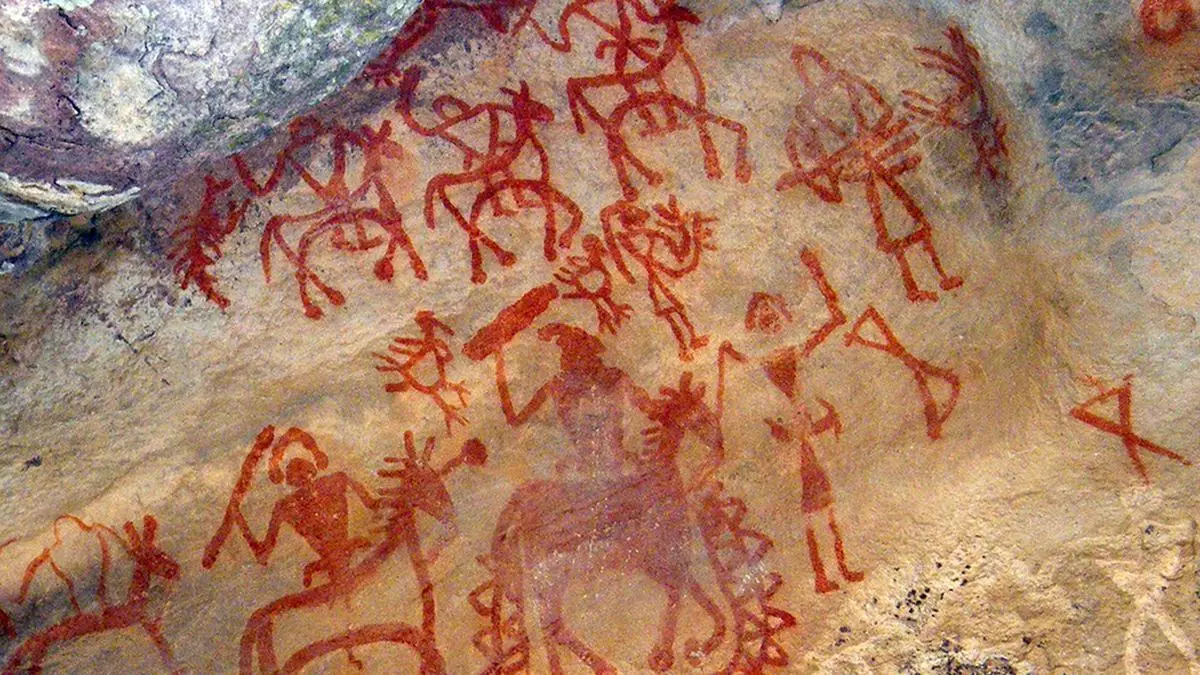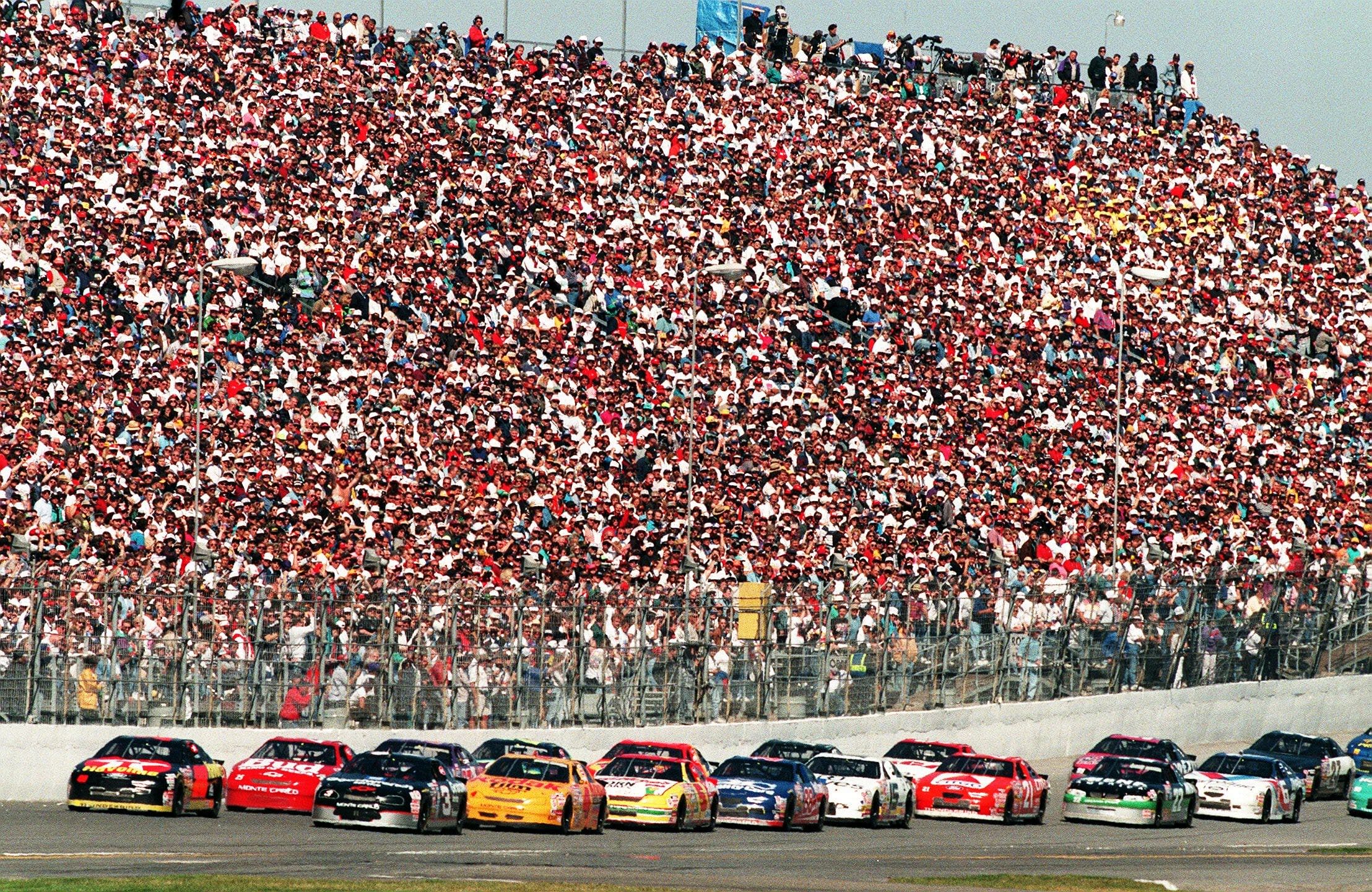
Join over 9000 global opinion formers by subscribing to Fathom’s influential Weekly Newsletter
Our Voice of the Fortnight is Haviv Rettig Gur on the Dan Senor Podcast, Call me back – Is Israel Winning?

Join over 9000 global opinion formers by subscribing to Fathom’s influential Weekly Newsletter
Our Voice of the Fortnight is Haviv Rettig Gur on the Dan Senor Podcast, Call me back – Is Israel Winning?

The Epic Games Store is kicking off the New Year with a fantastic gift: Kingdom Come Deliverance by Warhorse Studios. You have until 5 PM today to add this popular role-playing game (RPG) to your library for free. If you missed it when it was first offered as a freebie in early 2020, now’s your chance to grab it.
With the sequel to Kingdom Come Deliverance set to release in just a month, this is the perfect time to dive into the original. The main story alone takes over 40 hours to complete, and with side quests, the gameplay can easily stretch beyond 80 hours.
While this free offer includes the base game, there’s also additional content available. The game’s downloadable content (DLCs) are currently on sale for £3.99 each, with an 80% discount as part of the Epic Games Store Holiday Sale.
Related news: Kingdom Come: Deliverance II release date moved up by a week with exciting news
Released in 2018 and funded through Kickstarter, Kingdom Come Deliverance has sold over eight million copies worldwide. The game stands out from typical RPGs thanks to its realistic setting in 1403 Bohemia, which is now the Czech Republic. You play as Henry, the son of a blacksmith, in a world with no magic or mythical creatures—just pure medieval life.
The game’s missions reflect this realism, often involving everyday tasks that a blacksmith’s son might face. While some activities require patience, the engaging storyline and well-developed characters make it worth the effort. The combat system, which uses a unique direction-based approach, adds another layer of challenge.
With its gripping story, memorable characters, and authentic medieval world, Kingdom Come Deliverance is a must-play for RPG fans. Head over to the Epic Games Store before 5 PM today to claim it for free!
For more gaming news, click right here.
Aftab Ali loves technology and gaming. He is studying Computer Science and enjoys learning about new tech and playing games in his free time.
FULLSYNC LTD 2016-2021

Founded in 1993, The Motley Fool is a financial services company dedicated to making the world smarter, happier, and richer. The Motley Fool reaches millions of people every month through our premium investing solutions, free guidance and market analysis on Fool.com, personal finance education, top-rated podcasts, and non-profit The Motley Fool Foundation.
Founded in 1993, The Motley Fool is a financial services company dedicated to making the world smarter, happier, and richer. The Motley Fool reaches millions of people every month through our premium investing solutions, free guidance and market analysis on Fool.com, personal finance education, top-rated podcasts, and non-profit The Motley Fool Foundation.
You’re reading a free article with opinions that may differ from The Motley Fool’s Premium Investing Services. Become a Motley Fool member today to get instant access to our top analyst recommendations, in-depth research, investing resources, and more. Learn More
Key Points
The stock market is taking a breather after a relentless run, but opportunities still abound, according to some on Wall Street.
The Nasdaq Composite (^IXIC 1.77%) has climbed consistently higher over the past couple of years as technology investors have sought to profit from the economic recovery, the rapid adoption of artificial intelligence (AI), the slowing of inflation, and the ongoing campaign to lower interest rates. After notching gains of 43% in 2023, the index tacked on an additional 29% in 2024.
Investing offers no guarantees, but history suggests there could be more upside in store for investors in 2025. Looking back as far as 1972 — the first full year of trading for the Nasdaq Stock Market — in every year following gains of 28% or more, the tech-focused index gained another 19%, on average. This suggests the coming year could be a profitable one for investors.
Let’s look at two Nasdaq stocks that could soar in 2025, with potential upside of up to 153%, according to certain Wall Street analysts.
Image source: Getty Images.
The first Nasdaq stock with the potential for significant upside is ASML (ASML 1.99%). The company manufactures the advanced lithography systems used to produce microchips. ASML is also the only company in the world that supplies extreme ultraviolet (EUV) lithography technology, which is used by chipmakers to create the world’s most advanced semiconductors. This gives ASML a distinct advantage over its competitors.
For example, Taiwan Semiconductor Manufacturing produces an estimated 92% of the world’s most advanced chips and is ASML’s largest customer. This illustrates that ASML continues to benefit for the accelerating demand for AI.
In the third quarter, ASML’s revenue jumped 12% year over year to 6.67 billion euros (roughly $6.85 billion) while reporting earnings per share (EPS) of 5.28 euros (about $5.42), an increase of 10%.
CEO Christophe Fouquet expects the company’s accelerating growth to continue, forecasting net sales of 32.5 billion euros in 2025 at the midpoint of its guidance, an increase of 16% compared to its full-year 2024 sales forecast. The chief executive goes even further, saying ASML’s sales growth should average between 8% and 14% over the coming five years.
Some on Wall Street believe investors are missing the forest for the trees. Included among their ranks is JPMorgan analyst Sandeep Deshpande. He maintains an outperform (buy) rating on ASML, with a price target of $1,148. That represents upside potential of 66% compared to Tuesday’s closing price.
The stock price is down 36% from its July peak, as some system sales have been pushed out until next year. The analyst believes this is a mere speed bump and will set the stage for a rebound as sales ramp up — representing a compelling opportunity for long-term investors.
Given the accelerating demand for AI and the company’s strategic place in the semiconductor industry, I think now is the time to buy ASML as the secular tailwinds of AI continue to ramp up. And at just 28 times forward earnings, the stock is attractively priced in the context of its growing opportunity.
The proliferation of e-commerce and the race to deliver ever-faster shipping has created the need for more efficient fulfillment operations and advances in warehouse automation — and Symbotic (SYM 3.76%) is leading the charge.
The company offers a comprehensive suite of customizable AI solutions to automate the processing of full pallets and the peeling off of individual cases to maximize available warehouse space. Symbotic employs sophisticated algorithms and an army of robots equipped with computer vision that work in tandem to move pallets, load and unload delivery vehicles, and separate individual containers. This helps increase efficiency and uses every available inch of warehouse space, ultimately saving users money.
Symbotic notes that its systems increase efficiency, reduce labor costs, and dramatically lower operating and delivery expenses, while achieving a 30% to 60% reduction in space requirements. As a result, the return on invested capital (ROIC) is equally dramatic, and the system can generally pay for itself in a very short time. In fact, Symbotic estimates the purchase of each module can pay for itself numerous times over, saving customers tens or even hundreds of millions of dollars, depending on the overall size of the system.
The results are compelling. In its fiscal 2024 fourth quarter (ended Sept. 28), Symbotic generated revenue of $577 million, an increase of 47% year over year, resulting in EPS of $0.05, swinging from a considerable loss in the prior-year quarter.
Symbotic restated some of its quarterly reports in 2024, which sent some investors running for the exits. However, management noted these resulted in timing differences with “no impact to full-year fiscal year 2024 results.” Early last month, Symbotic filed its completed annual report with no additional changes, removing the final shadow the hung over the stock.
On the heels of these developments, Cantor Fitzgerald analyst Derek Soderberg reiterated an overweight (buy) rating and $60 price target on the stock, which represents potential upside of 153% compared to Tuesday’s closing price. The analyst’s optimism was confirmed after a recent meeting with management regarding its ongoing global expansion and progress with its warehouse-as-a-service joint venture.
Even more intriguing is the price tag, as Symbotic’s is selling for less than 1.3 times sales. I view that as an attractive price to pay for a key player in an emerging industry.
JPMorgan Chase is an advertising partner of Motley Fool Money. Danny Vena has no position in any of the stocks mentioned. The Motley Fool has positions in and recommends ASML, JPMorgan Chase, and Taiwan Semiconductor Manufacturing. The Motley Fool has a disclosure policy.
Related Articles
Invest better with The Motley Fool. Get stock recommendations, portfolio guidance, and more from The Motley Fool’s premium services.
Making the world smarter, happier, and richer.
© 1995 – 2025 The Motley Fool. All rights reserved.
Market data powered by Xignite and Polygon.io.
About The Motley Fool
Our Services
Around the Globe
Free Tools
Affiliates & Friends

Published : Jan 04, 2025 12:40 IST – 9 MINS READ
COMMents
SHARE
READ LATER
Rock art of Bhimbetka in the foothills of the Vindhya mountain range in Madhya Pradesh. The depiction of animals in the rock shelters of Bhimbetka were a vital clue to early human migration in the Indian subcontinent. | Photo Credit: LALIT SHASTRI
Conversations with the Animate ‘Other’ seeks to examine a long history of negotiations between the human and the nonhuman in a wide range of Indian literary, art historical, anthropological and archaeological texts. These texts have not only dislodged anthropocentricity but also draw attention to the embedded relationships between humans and nonhumans and their natural landscape—a necessary intervention in an era of widespread environmental degradation.
As the editor of the volume Aloka Parasher-Sen observes, it is necessary to pay greater attention to the lives of nonhuman species and the varied impact that the human destruction of the environment has had on nonhuman as well as human lives in various local and supra-local contexts. The conflict is not just between humans and nonhumans but also among humans over other living beings and the natural landscape. If one has to give equal importance to the human and the nonhuman, it is necessary to critique Enlightenment notions of the human as someone who possesses language, rationality and moral capabilities. Like the concept of nature itself, the terms “human” and “nonhuman” have to be seen as cultural constructs that privilege the human over the nonhuman. The nature/culture binary is blurred when we consider the nonhuman and (“other”) humans as subjects who possess their own embodied forms of agency.
Also Read | Bone connection
The book is divided into three parts. The first two parts historicise nonhuman forms of personhood and agency through various textual and art-based representations, while the third part focuses on historical investigations of the nonhuman.
In her essay “Imagination and Presence: Human-Animal Relations and the Arts of Pre-colonial Deccan”, Sudeshna Guha analyses a range of texts from rock art to tribal paintings and terracotta figurines that illustrate human perceptions of animals and the distinction they made between tame and wild animals. Although she rightly argues that it is important to blur the hierarchy between thinking humans and acting animals to imagine the possibility of an embodied form of subjectivity (where thought is not an essential aspect) that both humans and animals share, she does not illustrate her claim.
The focus of Guha’s textual analyses is largely centred on human perceptions of animals, categorisations of tame and domestic animals, human acts of sacrifice and kindness towards animals and the use of animal metaphors to describe human virtues. However, there is no discussion or imagination of how the animal might have perceived humans. In her discussion of the rock art of Bhimbetka, for example, it is not clear how the image illustrates the animals’ ability “to predict the hunters’ predictions and exercise autonomous powers of intentional action”. It does not help matters that most of the images in the book, including the ones in Guha’s essay, are not very clear; this impedes the possibility of visualising the animal’s embodied agency.
Reiko Ohnuma’s essay, “Animal Doubles of the Buddha”, which upholds the objectives of the volume by drawing attention to embodied forms of nonhuman agency, is perhaps the finest essay in this volume. Ohnuma argues that the animal characters in the Jatakas function as the Buddha’s alter egos, which both blur and preserve the moral hierarchy between humans and nonhumans. The horse, Kanthaka, who accompanies the Buddha when he renounces worldly life, serves as a scapegoat who partially absolves the Buddha of censure for abandoning his family by embodying the Buddha’s regret through his silent presence (for which he is rewarded in the next life).
The elephant Nalagiri, who is sent to kill the Buddha, publicises the Buddha’s greatness and ideal masculinity to the world when he is instantly subdued by the Buddha’s touch. While Kanthaka remains a proxy for the Buddha, Nalagiri is reduced to an allegory for base human desires that have to be domesticated if humans are to attain spiritual liberation. Like some of the other essays on Jainism in the volume, Ohnuma’s essay reinforces the fact that nonhuman living beings are worthy of compassion and respect even if they are considered lower than humans.
Andrea Gutierrez’s essay, “Gajasiksa as Interspecies Communication in Elephant Manuals of Early India”, explores the verbal and non-verbal codes of communication that were used to train royal elephants in the 12th century elephant manual Manasollasa and the undated manual Matangalila. Gutierrez argues that the haptic and seismic modes of communication that mahouts employed were forms of manipulation that were more violent than they appear. Although Gutierrez argues that mahouts communicated with elephants in Sanskrit and other local languages, many of the words that she lists sound more like sounds that may accompany touch and gestures.
As Gutierrez rightly argues, these manuals may privilege the verbal over the non-verbal, but the most significant part of the communication between mahout and elephant is a gestural and haptic repertoire that is a product of the interactions between them. Do we have a sense of how these texts were read and received? Are there any descriptive/visual accounts of how elephants respond to touch and gestures? How does their familiarity with various Indian languages including Sanskrit give us access to their cognitive and affective abilities or even their willingness or unwillingness to obey their mahouts?
In his essay “Of a Porcine Mother and her Tamil Children”, Nachiket Chanchani examines the ambivalent relationship between humans and feral and domesticated pigs and wild boars primarily through his study of a 10th-century sculpture of Varahi. He further tracks literary perceptions of pigs in Tamil Sangam poetry where they are described as animals that “dig up mud, eat bulbs and millet, uproot reeds, make nests” and in Sanskrit poetry where the boar is an avatar of Vishnu. Boars, like the other plants and animals that feature in Sangam poetry, are conventional symbols for human emotions and moods rather than being animals in their own right—an aspect that Chanchani leaves unexplored. What are the theological and aesthetic implications of having a theriocephalic representation of Varahi rather than a theriomorphic one? What does the literary have to do with the sculptural and what is the specificity of the sculptural as a medium of representation? Is the pig in any of its representations visualised as an animal that has its own subjectivity rather than merely being a symbol of human (political) virtue?
Bhutanese painted thanka of the Jataka Tales, circa 18th-19th century. | Photo Credit: Wikimedia Commons
I have the same question for Viraj Shah’s essay “Nagas or Serpents in Jain Visual Imagery”, where snakes are imagined as morally ambivalent creatures that blur the human-nonhuman boundary by assuming anthropomorphic, therianthropomorphic, and zoomorphic forms. Again, Shah does not explore the aesthetic implications of these various forms in terms of imagining the snake’s subjectivity and agency.
In her essay, “From Earth to Form: The Terracotta World of the Non-Human”, Aloka Parasher-Sen argues that the human and the nonhuman shared the same ritual, social and religious space in Harappan terracotta art. Animals did not just inhabit the religious domains of people but were also depicted as material possessions and toys and decorative objects. In her discussion of animal sarcophagi that were discovered in Megalithic society in the Deccan, Parasher-Sen does not explore the implications of having animal shaped sarcophagi to bury people who believed in life after death. Parasher-Sen also does not give us the historical and cultural context in which terracota figurines were produced. What are the implications of the distinction between historically and culturally sensitive terracotta art and that which is “ageless” and traditional? In her discussion of Andrea Gutierrez’s work, I am not sure how animals constituted early Brahminical ritual and were an intimate part of the human world.
Anchit Jain’s essay, “Situating Camels and Other Animals in their early Medieval Efflorescence of the Thar”, cursorily looks at the representation of the camel in medieval Jain literary texts and economic histories of the Thar region but fails to capture the subjectivity of the camel. The camel that seems to be no different from the other animals is just a passive object or an instrument of human trade and commerce. I am not sure what the camel’s commercial role has to do with the Jain literary perception of the camel as a playful animal or as an object of ridicule. If the camel was playful, it suggests some form of embodied agency that must have shaped its relationship with humans and history.
Vijaya Ramadas Mandala’s essay, “The ‘Wild Ecology’ of Hunting and Forest Beasts in Colonial India” contrasts colonial and tribal (Gond and Baiga) attitudes towards the tiger. While the colonial state viewed the tiger as an animal that had to be tamed for its own governmental purposes, for the indigenous tribes, the tiger was a fellow forest being that had to be respected and feared. Mandala deploys the term “wild ecology” to describe the relationship between the tiger and its natural environment in its “primeval state”. What is not clear is how this pristine state of nature can be assumed without being imagined as a (colonial) projection onto the past.
Mandala believes that the Gond and Baiga have had a “biocentric” relationship with nature unlike the utilitarian and anthropocentric relationship that the colonial state had with nature. As Mandala herself argues, the conflict between Baigas, Gonds and the tiger is a man-made dichotomy that reinforces the fact that even the tribes have an anthropocentric perception of the tiger that they hunted for food. The difference, if any, between the Gonds and the Baigas and their relationship to nature and the tiger has not been spelt out in the essay. I also believe that the colonial perceptions of these tribes need to be challenged.
Also Read | Mother earth tales
Finally, let me end by raising a few questions for Parvathy V.’s essay, “Human-Serpent Entanglement in Kerala”. In response to some of the claims Parvathy makes about myths and literary texts, cannot myths be read as literature? Do literary texts and art not evoke emotions? How does the author define myth, fantasy and what is their relationship to daily life?
While the objectives Parasher-Sen discusses in the introduction promise to be a crucial intervention in contemporary debates on the environment and the fraught relationship between human and nonhuman actors, they are not entirely upheld in the rest of the book. In fact, some of the essays end up reinforcing the hierarchy between nature and culture; human and nonhuman without sufficiently capturing/imagining the sensory modes of communication and agency that are specific to nonhuman subjects (and that they share with their human counterparts) that are often reduced to symbols and metaphors for human values. Nonetheless, the volume is a fair attempt to imagine and understand the fraught negotiations between human and nonhuman subjects across various media and human history that have largely reinstated the moral and political hierarchy between the human and the nonhuman.
Kiran Keshavamurthy is Assistant Professor of English at IIT Guwahati and a scholar of modern Tamil literature.
CONTRIBUTE YOUR COMMENTS
SHARE THIS STORY
BACK TO TOP
Terms & conditions | Institutional Subscriber
Comments have to be in English, and in full sentences. They cannot be abusive or personal. Please abide to our community guidelines for posting your comment

Most NASCAR races take place on high-speed oval tracks with banked turns, which are known as superspeedways if they go over one mile in length. Configurations like tri-ovals with curved front stretches and quad ovals with four turns make up for an interesting racing experience. All oval races run counterclockwise, with left-hand turns, and only two races are held on road courses with more than four and little banking, such as Infineon Raceway.
Iconic venues like Daytona International Speedway, famous for its steeply banked turns and hosting the most renowned event of NASCAR, Daytona 500, and Bristol Motor Speedway, famously known for its tight racing conditions and frequent collisions that happen during the race have become staples in this sport.
On that note, let’s take a look at 5 NASCAR races every fan should attend in 2025.
The Hollywood Casino 400 at Kansas Speedway is an important playoff race, making it one of the most competitive events of the NASCAR season. The 400.5-mile race is made up of 267 laps on a 1.5-mile track. This race is typically held during the playoffs’ Round of 12 and often comes out with the contenders for the world championship.
The 2024 Brickyard 400 marks a big moment for NASCAR fans as the event returned to the Indianapolis Motor Speedway Oval for the first time since 2020.
Ever since 2020, the Brickyard 400 had been shifted to the Indianapolis Motor Speedway’s infield road course, but in 2024, the race made a comeback to its oval layout. It was also the first time when Nextgen cars were introduced on this track. The speedway is a 2.5-mile rectangular track and Jeff Gordon has the most number of victories here to date with 5 wins under his belt.
The Southern 500 at Darlington Raceway in South Carolina is one of NASCAR’s oldest races. The first race here was held in 1950. The track is 501 miles long with 367 laps to be covered in total, the track is egg-shaped.
The race is traditionally run on Labor Day weekend and is a Crown Jewel event. Jeff Gordon currently holds the most no. of wins on this track, 6, and Hendrick Motorsports has bagged 12 wins, the most by a team. Being the oldest not only makes it a race with a lot of history attached to it, but the challenging track layout also makes it a must-watch for the fans.
The Coca-Cola 600, which is run at the Charlotte Motor Speedway in Concord, North Carolina, is NASCAR’s longest race. Held since 1960, it covers 600 miles (400 laps) on a 1.5-mile quad-oval track, it tests a driver’s endurance along with the strength of their car.
This race is a Memorial Day weekend tradition and one of NASCAR’s Crown Jewel events. Dale Earnhardt leads in the driver race win stats, with 4 wins to his name, while in terms of team wins, Hendrick Motorsports has 13 in total.
The Daytona 500, held at Daytona International Speedway in Daytona Beach, Florida, is considered to be NASCAR’s most prized event. It was held in 1959 for the first time and spans 500 miles and 200 laps on a 2.5-mile oval track. This race is also known as “The Great American Race,” and is the opening race of the NASCAR season, and follows a three-stage format.
Richard Petty holds the record for most driver wins (seven), other than that, Hendrick Motorsports and Petty Enterprises lead with nine team wins each. As for the manufacturers, Chevrolet has maintained its lead with 26 wins.
Quick Links
Your perspective matters!
Start the conversation

Next up in 5
Example video title will go here for this video
Next up in 5
Example video title will go here for this video
PORTLAND, Oregon — As many Americans embrace a post-holiday break from alcohol, there’s a new advisory to consider all year long. On Friday, U.S. Surgeon General Vivek Murthy warned of the link between alcohol and cancer; specifically, that alcohol is the third-leading preventable cause of cancer behind tobacco and obesity.
“The research has been building for years now,” Vivek told NBC News. “We’ve had more and more evidence that keeps accumulating year by year that’s giving us a strong connection, a causal link between alcohol and cancer.”
Murthy said there are well established links between alcohol and seven types of cancer including mouth, throat, voice box, esophagus, breast, liver and colorectal disease.
Current advisories on alcohol labels warn against drinking while pregnant, driving or operating machinery. Murthy wants warnings to also include cancer risks associated with drinking, though changing the labels would take an act of Congress. Health officials in Oregon said they would welcome the change.
“We know that having that advisory, having that label on that bottle would make a big difference in raising awareness,” said Dr. Tom Jeanne, deputy state health officer and epidemiologist at the Oregon Health Authority.
Jeanne said every year, more than 2,500 Oregonians die from alcohol-related causes. It’s one reason OHA launched Rethink the Drink. The campaign doesn’t tell people not to drink, Jeanne said, but offers fact-based information to help people make the right decision for themselves.
“We want people to think about ways they can be helpful in their communities, support other people who may not want to drink or to drink less,” said Jeanne. “Every level of drinking—whether you’re drinking multiple drinks a day or just one or two every once in a while—drinking less will be healthier for you.”
Right now national guidelines recommend no more than two drinks a day for men, and one or fewer drinks a day for women. Still, the Surgeon General’s report notes that even one or two drinks a day increases the risk of cancer, not just heavy drinking.
Notifications can be turned off anytime in the browser settings.

Jan 4, 2025
Photos submitted by Savannah Casey/WCCBI Examples of cardboard sleds that ran in past in past Winterfest races are pictured in photos above and below. This year’s event with take place on Feb. 1 at Chapman State Park.
Have you ever wanted to make a sled out of cardboard and duct tape, then race it?
If so, your chance is coming soon.
“The Winterfest Cardboard Sled Races has become an annual tradition, bringing laughter and friendly competition to the community,” said Savannah Casey, Warren County Chamber of Business & Industry operations director. “This year’s Winterfest Cardboard Sled Races will take place at 3 p.m. near pavilion four at Chapman State Park. We’re looking for ingenuity and creativity. From classic designs to elaborate contraptions, the races provided a unique opportunity for participants to unleash their inner engineers for a chance to win a trophy.
This event has been a great addition to Winterfest as it does not depend on snow. The dogs pull the sleds with 20-pound dog food bags inside. The event showcases incredible community spirit as families and friends cheer on creative sled designs and enjoy a day of winter fun.”
All sleds must be made of duct tape and cardboard only with a rope to attach for a harness. Riders must provide their own rope. Sleds must be a minimum of 40 inches long and no wider than 22 inches. Sleds must be able to support the weight of a 20-pound bag of dog food. People will not be riding in sleds during the competition – only dog food. Any design may be used.
The races are limited to 20 entries, with the races held only if there is enough snow. All sleds will be pulled by sled dogs of Smokey Hill on a short course with a “freight load of 20 pounds of dog food.” Dogs will be chosen at random by participating team members.
Each race will be timed. In the event of a tie for 1st place for the fastest time, a runoff will decide the winner. The course will be located on the beach side of Chapman State Park, near Pavilion 4, with check-in no later than 2:30 p.m.
Awards will be given for fastest time, best looking sled and survivor award for the sled that stays the most intact.
Races will be held Feb. 1. To register, email Savannah Casey at szimmerman@wccbi.org to get the official entry form. There is no cost to participate.
Further charges have been filed against a Warren woman who had previously been jailed for stealing packages from at …
Copyright © Times Observer | https://www.timesobserver.com | PO Box 188, Warren, PA 16365 | 814-723-8200